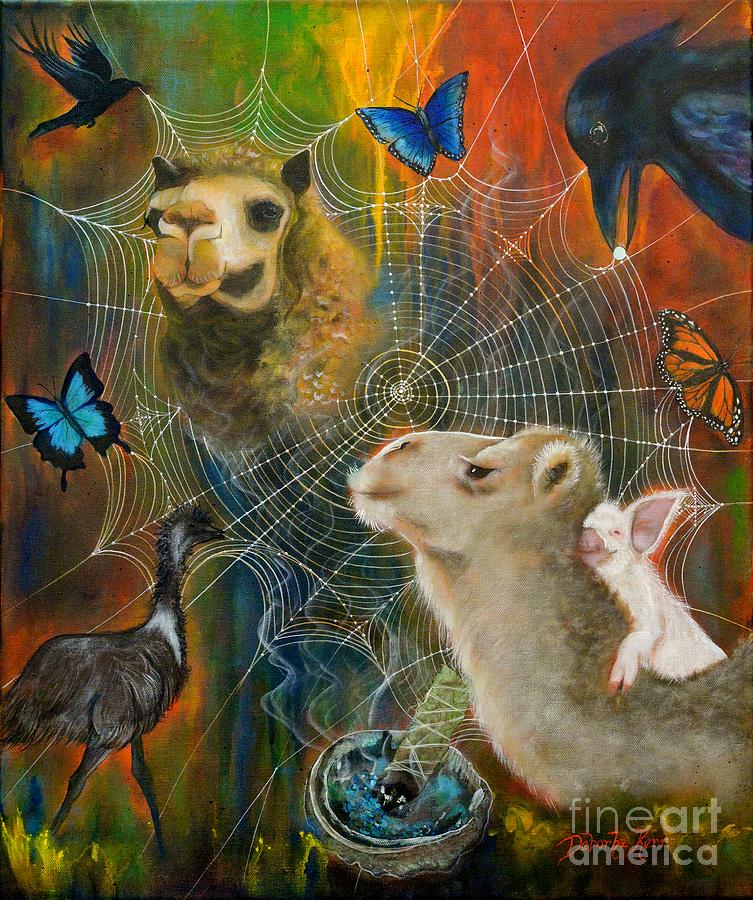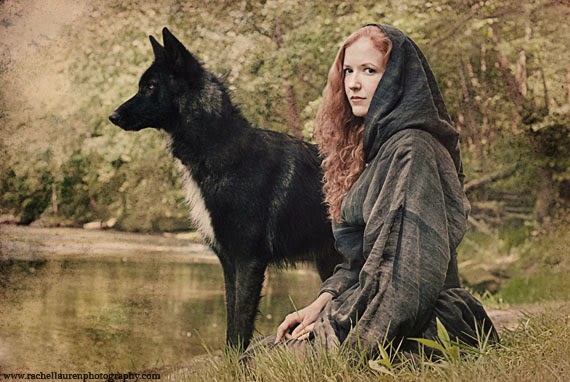A Journey Through the Sacred Animals of Australia: From Ancient Lore to Modern Symbolism
A Journey Through the Sacred Animals of Australia: From Ancient Lore to Modern Symbolism

Australia, a land of vast landscapes and diverse wildlife, boasts a rich tapestry of indigenous culture woven through its history. Within this vibrant cultural fabric, animals hold a profound significance, often serving as sacred symbols that represent ancestral spirits, natural forces, and the interconnectedness of life. This article delves into the fascinating world of Australia’s sacred animals, exploring their historical and cultural significance, their representation in Aboriginal art and storytelling, and their enduring relevance in contemporary society.
The Dreaming and the Sacred Connection
Related Articles: A Journey Through the Sacred Animals of Australia: From Ancient Lore to Modern Symbolism
- Unveiling The Timeless Tapestry: Exploring The Ancestral And Creation Myths Of Aboriginal Australia
- Unveiling The Green Gems: Non-Invasive Root Trees For Australian Gardens
- Beyond "Australia": Unveiling The Rich History Of Aboriginal Names For The Land Down Under
- The Earth In Aboriginal Symbolism: A Tapestry Of Connection And Respect
- Nourishing The Land, Nourishing The Soul: A Deep Dive Into Australian Aboriginal Food Systems And Cultural Ownership
The foundation of Aboriginal culture lies in the Dreaming, a complex system of beliefs and narratives that describe the creation of the world and the interconnectedness of all beings. In the Dreaming, ancestral beings, often depicted as animals, travelled across the land, shaping the landscape, creating life, and establishing the laws that govern the natural world. These beings left their spirit within the land, imbuing it with significance and power.
Animals, therefore, are not simply creatures of the natural world but embody the very essence of the Dreaming. They are seen as powerful spirits, custodians of the land, and symbols of ancestral knowledge. This sacred connection between humans and animals is reflected in countless Aboriginal stories, songs, dances, and rituals.
Kangaroo: The Symbol of Strength and Resilience
The kangaroo, Australia’s national animal, is a powerful symbol of strength, resilience, and the ability to adapt to challenging environments. In Aboriginal culture, the kangaroo is associated with the spirit of the ancestral being who created the land and its creatures. It represents fertility, abundance, and the cycle of life.
The kangaroo’s powerful legs and strong tail symbolize its ability to overcome obstacles and thrive in difficult conditions. This resonates with the resilience of Aboriginal people, who have endured countless challenges and continue to maintain their cultural heritage. The kangaroo is also associated with the concept of "mob" or community, representing the importance of social cohesion and shared responsibility.
Emu: The Keeper of Knowledge and the Messenger of the Sun
The emu, a large flightless bird, is revered in Aboriginal culture as a keeper of knowledge and a messenger of the sun. Its association with the sun stems from its ability to see for great distances, signifying its connection to the celestial world and its role in guiding people through the land.
The emu is also linked to the concept of creation and the cyclical nature of life. Its feathers, used in ceremonies and adornment, represent the beauty and diversity of the natural world. The emu’s powerful legs and swift movements symbolize the ability to travel long distances and explore new territories, reflecting the nomadic lifestyle of many Aboriginal groups.

Snake: The Symbol of Transformation and Healing
Snakes, often viewed with fear and suspicion in other cultures, hold a significant place in Aboriginal mythology. They are seen as powerful symbols of transformation, healing, and the interconnectedness of life. The snake’s ability to shed its skin represents renewal, rebirth, and the cyclical nature of existence.
In many Aboriginal stories, snakes are associated with ancestral beings who created the land and its rivers. They are also believed to possess healing powers, with their venom often used in traditional medicine to treat a variety of ailments. The snake’s serpentine form symbolizes the flow of life, the connection between the physical and spiritual realms, and the journey of the soul.
Goanna: The Guardian of the Land and the Spirit of the Ancestors
The goanna, a large lizard found throughout Australia, is a powerful symbol of the land and its ancestral spirits. In Aboriginal mythology, the goanna is often associated with the creation of the land and the establishment of its laws. Its powerful jaws and sharp claws represent its ability to defend its territory and protect its people.

The goanna is also seen as a guardian of the ancestral spirits, embodying their wisdom and power. Its presence in the landscape is a reminder of the sacredness of the land and the importance of respecting its traditions. The goanna’s ability to camouflage itself in its surroundings symbolizes the importance of being aware of one’s surroundings and understanding the hidden forces of the natural world.
The Enduring Relevance of Sacred Animals
The sacred animals of Australia are not simply creatures of the past. They continue to hold a profound significance in contemporary Aboriginal culture, serving as symbols of identity, connection to the land, and the enduring spirit of the Dreaming.
Aboriginal artists continue to depict these animals in their artwork, preserving their cultural significance for future generations. Contemporary Aboriginal artists often incorporate traditional symbols and imagery into their work, reinterpreting them in new and innovative ways.
These sacred animals also play a role in the ongoing fight for Aboriginal land rights and cultural recognition. They serve as reminders of the deep connection between Aboriginal people and the land, and the importance of protecting their cultural heritage.

Beyond Aboriginal Culture: The Influence of Sacred Animals in Modern Australia
The influence of Australia’s sacred animals extends beyond Aboriginal culture, shaping the nation’s identity and influencing its art, literature, and popular culture.
The kangaroo, for example, has become a national symbol, appearing on the coat of arms and representing Australia on the world stage. The emu is also featured on the national coat of arms, symbolizing the nation’s strength and resilience.
These animals are often used in branding and marketing, reflecting their cultural significance and their appeal to both local and international audiences. Their presence in popular culture, from children’s books to films, reinforces their enduring relevance in Australian society.
Conclusion
The sacred animals of Australia are more than just creatures of the natural world. They embody the spirit of the Dreaming, the wisdom of the ancestors, and the enduring connection between humans and the land. Their stories, symbols, and rituals continue to shape the lives of Aboriginal people today, reminding them of their cultural heritage and the importance of preserving their traditions for future generations.
These sacred animals also serve as a reminder of the rich cultural diversity of Australia and the importance of respecting the traditions of its First Nations people. Their enduring influence in contemporary society reflects their power to inspire, connect, and remind us of the deep connection between humans and the natural world.
FAQ: Australia’s Sacred Animals
Q: What is the Dreaming in Aboriginal culture?
A: The Dreaming is a complex system of beliefs and narratives that describe the creation of the world and the interconnectedness of all beings. It is the foundation of Aboriginal culture and spirituality.
Q: Why are animals considered sacred in Aboriginal culture?
A: In the Dreaming, ancestral beings, often depicted as animals, shaped the land, created life, and established the laws that govern the natural world. Animals are therefore seen as powerful spirits, custodians of the land, and symbols of ancestral knowledge.
Q: What is the significance of the kangaroo in Aboriginal culture?
A: The kangaroo is a symbol of strength, resilience, fertility, and the cycle of life. Its powerful legs and strong tail represent its ability to overcome obstacles and thrive in difficult conditions.
Q: What is the significance of the emu in Aboriginal culture?
A: The emu is a keeper of knowledge and a messenger of the sun. Its association with the sun stems from its ability to see for great distances, signifying its connection to the celestial world.
Q: What is the significance of the snake in Aboriginal culture?
A: Snakes are symbols of transformation, healing, and the interconnectedness of life. Their ability to shed their skin represents renewal, rebirth, and the cyclical nature of existence.
Q: What is the significance of the goanna in Aboriginal culture?
A: The goanna is a guardian of the land and the spirit of the ancestors. Its powerful jaws and sharp claws represent its ability to defend its territory and protect its people.
Q: How are sacred animals represented in contemporary Aboriginal art?
A: Contemporary Aboriginal artists often incorporate traditional symbols and imagery into their work, reinterpreting them in new and innovative ways.
Q: What is the impact of sacred animals on modern Australian society?
A: Sacred animals continue to shape the nation’s identity, influencing its art, literature, and popular culture. They are often used in branding and marketing, reflecting their cultural significance and their appeal to both local and international audiences.

Closure
Thus, we hope this article has provided valuable insights into A Journey Through the Sacred Animals of Australia: From Ancient Lore to Modern Symbolism. We hope you find this article informative and beneficial. See you in our next article!


